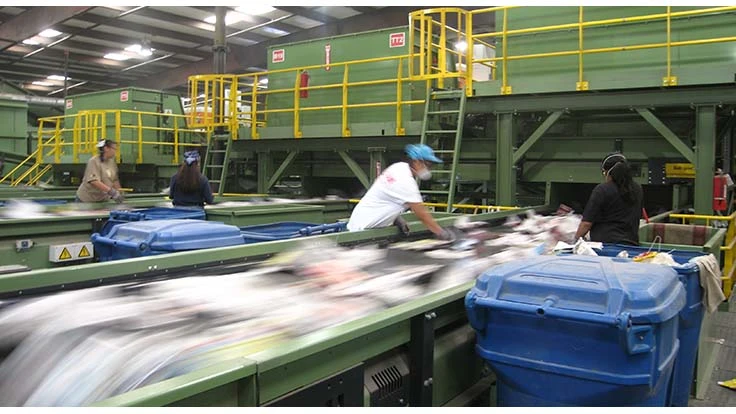
A study by the Pennsylvania Waste Industries Association (PWIA) has concluded that “although recycling has generated questions around its costs and other complex issues, Pennsylvania continues to be a national leader” in recycling.
“The amount of materials recycled [per person] in the Commonwealth is three and a half times that of the country as a whole, and grew by 22 percent in a five-year period, from 4.8 million tons to 5.85 million tons,” according to the study commissioned by the PWIA. The organization summarized findings of the study at the 2015 Pennsylvania Recycling Industries Congress, held in mid-November in Harrisburg.
That study also determined that the waste industry—a combination of collection, disposal and recycling activities—makes an annual contribution of $4.2 billion to the state’s economy and supports more than 26,000 jobs in Pennsylvania, according to the PWIA. “Single-stream recycling now accounts for 43 percent of all materials recycled in Pennsylvania and generates higher participation in recycling because it does not require consumers to separate materials,” adds the group.
“Most citizens seem to think that they simply place recyclables in a container, it gets picked up, and it disappears,” said PWIA President Mark C. Pedersen. “What actually happens to those materials? Recycling is a multi-billion dollar industry in the Commonwealth. Our industry has a real story to tell, and it includes innovation, investment, economic growth and environmental stewardship.”
RMC President Robert Bylone said the growth of recycling has stimulated considerable “downstream” economic impact. “Our industry has invested $400 million in capital improvements,” said Bylone. “That, in turn, has created an economic ripple impact of about $800 million and the support of about 6,000 jobs. More than 2,200 operations are involved in the collection and processing of recyclables, about 500 manufacturers are using recycled materials, and another 1,000 enterprises are involved in reuse and remanufacturing. We are seeing the efforts of the RMC and its partners produce results that greatly benefit the economy.”
“The industry is not without its issues,” said Pedersen. “However, at the same time, the favorable climate created by Pennsylvania’s commitment to recycling has played a significant role in boosting its growth and success. Pennsylvania is a national leader in recycling and is reaping significant environmental and economic benefits because of that.”
PWIA says it represents private sector waste haulers, recyclers and landfill operators in Pennsylvania and it is the state chapter of the Washington-based National Waste & Recycling Association. The not-for-profit RMC bills itself as supporting research and development of new recycling technologies and working with manufacturers to encourage the use of recycled materials in their operations and product lines.
Get curated news on YOUR industry.
Enter your email to receive our newsletters.
Latest from Recycling Today
- Study looks at potential impact of chemical recycling on global plastic pollution
- Foreign Pollution Fee Act addresses unfair trade practices of nonmarket economies
- GFL opens new MRF in Edmonton, Alberta
- MTM Critical Metals secures supply agreement with Dynamic Lifecycle Innovations
- McClung-Logan Equipment Co. joins Tana’s authorized dealer network
- Grede to close Alabama foundry
- Plastics Recycling Conference 2025: Working toward their targets
- SWACO rolls out new commercial recycling and food waste programming





